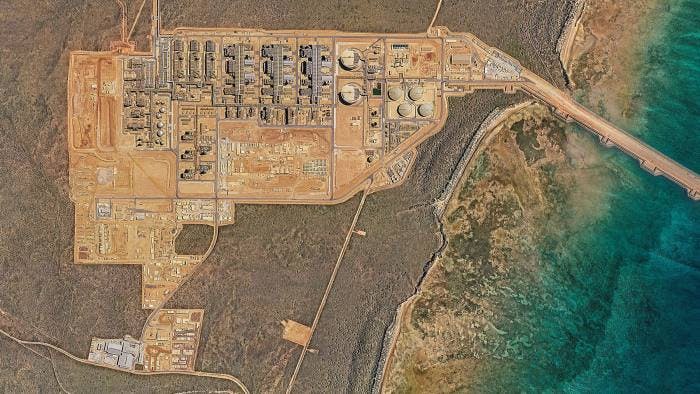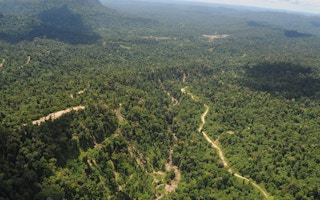Where investors see risks in buying carbon credits that might not live up to their promise, insurers are seeing opportunity. A market is developing globally for insurance related to carbon credits, according to industry experts.
To continue reading, subscribe to Eco‑Business.
There's something for everyone. We offer a range of subscription plans.
- Access our stories and receive our Insights Weekly newsletter with the free EB Member plan.
- Unlock unlimited access to our content and archive with EB Circle.
- Publish your content with EB Premium.
“Everybody wants to claim the receipt of carbon savings, but nobody wants to put their hand up if things go wrong,” said Vipul Shetty, director of energy transition at insurance brokerage Howden. “And when you’re in the business of risk, things go wrong.”
Recent reports have revealed that markets have been misled about the actual impact of carbon credits, even by industry leaders. On Wednesday, global carbon credit seller South Pole saw its chief executive officer step down after the group exited one of its biggest forest conservation project in Kariba, Zimbabwe. Earlier this year, standard setter Verra was criticised for backing “worthless” carbon credits, which were unable to prevent or remove their promised levels of carbon emissions.
These controversies have spooked investors, leading to weak volumes traded in carbon markets, as witnessed by Malaysia’s Bursa Carbon Exchange, and stringent hurdles faced by carbon credit suppliers across the region.
Given these risks, Shetty sees demand for carbon credits emerging globally, especially among non-energy firms like pharmaceutical manufacturers, property developers and banks. Energy efficiency programmes only [account] for a portion of these companies’ emissions. The other half of the equation involves carbon capture, alternative energy forms like hydrogen and to an extent, carbon credits.”
Where larger companies can afford carbon capture and storage (CCS) solutions, small and medium-sized enterprises are likelier candidates for carbon credit purchases, said Jeffrey Chan, chief executive officer of Howden’s Malaysian operations.
Demand for carbon credit insurance also extends beyond companies to include investors and carbon marketplaces, said Christopher Au, director of climate practice in Asia Pacific at global advisory, broking and solutions firm WTW.
“There is substantial growing interest from buyers,” said Au told Eco-Business, citing more scrutiny and due diligence as the key reason for increased interest in buyer protection.
Much of this interest is aligned with forestry assets, said Au, partly because the insurance industry has a long history in the sector and underwriting capabilities in forestry. “We see interest in products that are either indemnity [indemnifying policyholders from an insured event] or parametric [paying out a fixed amount upon the occurrence of a triggering event],” he said.

Insurance brokerage Howden is expanding its capabilities in carbon credit and energy transition insurance, said Jeffrey Chan, CEO of the firm’s Malaysian branch (right) and Vipul Shetty, director of energy transition. (left). Image: Howden
Although the market is still in the early stages of development, large international insurers and specialist start-ups are already promoting products and solutions related to carbon credit risks, said Au. “There is no shortage of interest from the supply side, and product innovation is moving in new ways,” said Au, whose team at WTW has spoken to dedicated carbon credit specialists at large insurers and specialist parametric underwriters.
One of these is London-based start-up Kita, which replaces faulty carbon credits with those from its own pool of suppliers, while Oka Insurance said that it helps to replace impaired credits, including those affected by catastrophic events, methodology changes and fraudulent issuing.
Howden, which is headquartered in the United Kingdom and operates in 50 countries including Malaysia and Singapore, offers similar protection for carbon market actors, having launched its carbon invalidation coverage a year ago. The coverage indemnifies buyers of carbon credits that do not meet the promised specifications, explained Chan. Howden also recently launched its climate parametrics practice, which provides financial protection against climate risks, including natural catastrophes and extreme weather.
The company is still in the process of engaging carbon exchanges in Asia, but Shetty said that so far, discussions on carbon insurance have been well-received. “When they tell potential buyers that there is this recourse, it is more likely that the buyer purchases the carbon credit,” he told Eco-Business in an interview.
So far, Shetty has not seen the added cost of carbon insurance being a hurdle to buyers. Howden prices its premiums based on information it collects about carbon project developers and their accreditors, and insures credit buyers based on the confidence they have in the projects. In that sense, the price of insurance is determined by the market itself, he said.
WTW’s Au pointed out that there are always challenges in scaling products to ensure they support the declared objective of carbon markets. “Our focus is on how insurance can play a role in a properly functioning carbon marketplace,” he said. “The risks of rushing to new carbon initiatives are now well known.”
‘Plethora of risks’
There is also a growing opportunity for insurers to cover carbon capture and storage (CCS) activities, although these are often much wider ranging due to the complex technologies and risks involved. There is a “plethora of risks” when it comes to developing CCS facilities, said Shetty, starting with what is often a multibillion-dollar construction process.
These range from the challenge of building large physical structures surrounded by water, as many CCS sites are offshore, he pointed out. For instance, the Kasawari CCS project by Malaysian oil firm Petronas sits 800 kilometres off the coast of Bintulu, Sarawak. Carbon capture technologies such as liquefaction and compression are also complex, said Shetty.
“There’s also the risks associated with drilling the well underground,” he said, pointing out that CO2 has to be stored at least 800 metres below ground to keep the carbon in a supercritical state, which is a mix of liquid and gases. Even when the project is operational, the highly corrosive nature of carbon dioxide (CO2) when in contact with moisture raises issues along its entire value chain.
An example of how things can go wrong here is Chevron’s Gorgon project in Australia, said Shetty. Technical problems have abounded at Chevron’s CCS site there since 2017, when leaks were discovered coming from corroded valves and the carbon captured had to be vented instead. The oil company and its partners have since been forced to pay more than US$180 million for carbon offsets to make up for the shortfall.
“A lot of government regulation will start to be implemented related to the venting of CO2,” said Shetty. “Companies will all need environmental liability insurance on top of construction and operational insurances for these projects.”

Chevron Gorgon liquefied natural gas plant, Western Australia. Chevron admitted in July 2021 it had failed to meet Canberra’s requirements to lock away 80 per cent of emissions generated within its first five years of operation. Image: Chevron
Adjusting for speed humps
Where regulations or national policies are scarce, Howden sees the insurance industry playing an active part in the development of industry rules. For example, in the case of electric vehicles (EVs), the height of speed bumps over which the car is driven affects the total value of the car. Since higher humps could hit batteries underneath the car and reduce their value, EVs in those areas should be more costly for insurers to cover, explained Shetty.
“But what is happening in the region, and what there’s no regulation for very interestingly enough, is the size of humps on roads all over Asia,” he said.
As insurers start to scrutinise the EV industry, however, it is likely that the industry will recommend mitigating solutions, whether for the way EVs are built or to regulate the heights of speed humps, said Shetty. But this is a process that will probably take years, he said.
“Over the years, the insurance industry has always been able to influence the trajectory (of regulatory development) in certain industries, such as oil and gas or power,” he said. “Our underwriters have been able to add certain risk recommendations to improve those industries, which is how we have been operating with reduced losses in the energy sector.”
Howden also sees its protection of EV assets extending beyond the vehicles and their batteries to helping industry players de-risk infrastructure-related activities, such as installing charging stations and connecting those stations to renewable energy sources or the electricity grid, said Chan.
“Traditionally, people perceive insurance as a contingency, only if something bad were to happen do you (turn to it),” said Chan. “But that narrative is changing — insurance today has become a catalyst, to enable certain things to happen.”










